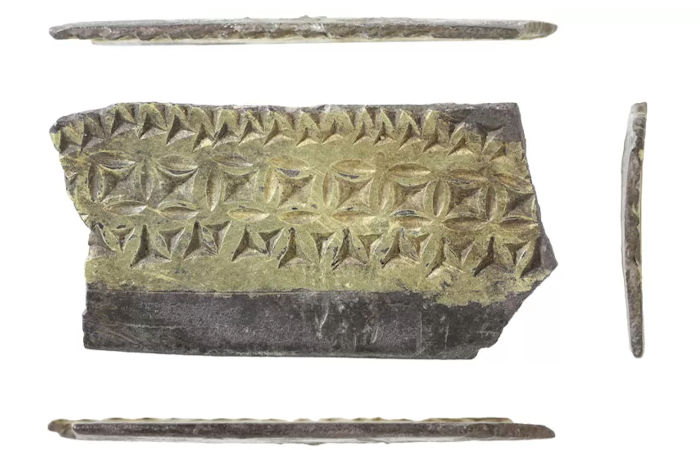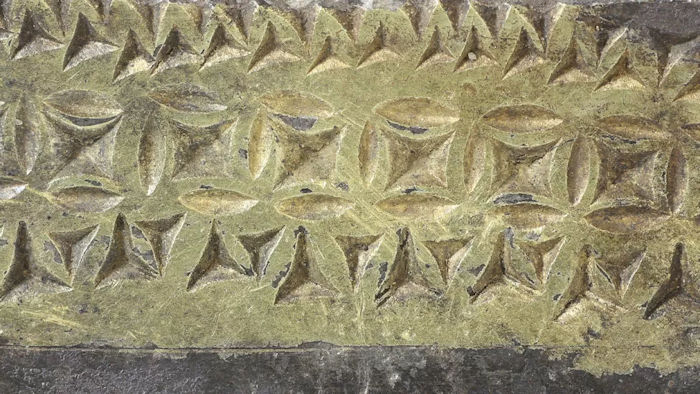Jan Bartek – AncientPages.com – A metal detector has found an ancient Roman fragment made of silver in Norfolk. The piece was obviously part of something, but what exactly? Is it part of an ancient Roman inscription or some unknown artifact? Scientists admit they are frustrated and cannot determine what the late Roman-era 1in (26mm) by 0.5in (13mm) piece found near Diss is.

A fragment of gilded silver treasure has left experts baffled. Credit: Andrew Williams/ Norfolk County Council
The tiny fragment of gilded silver treasure was discovered in February 2022, and scientists have scratched their heads ever since.
Experts in the United Kingdom and Europe have been consulted but cannot solve the mystery.
“The most basic question of all is, ‘what was this?’ … it’s a bit frustrating,” Dr. Helen Geake, Norfolk’s county finds liaison officer, told the BBC.

A close-up of the curious Roman fragment. Credit: Andrew Williams/ Norfolk County Council
“It is at the high end of silver-smithing in the Roman world and part of the sort of thing that would have been produced and used across the whole of Roman Empire, from Egypt to Hadrian’s Wall, from Morocco to Hungary.
The British and National Museum of Scotland and European experts have been consulted.
“I hope someone gets in touch with the answer,” Dr. Geake added.
The last time she appealed for help with a mysterious object, she was contacted on Twitter by someone who had the solution.
Written by Jan Bartek – AncientPages.com Staff Writer





